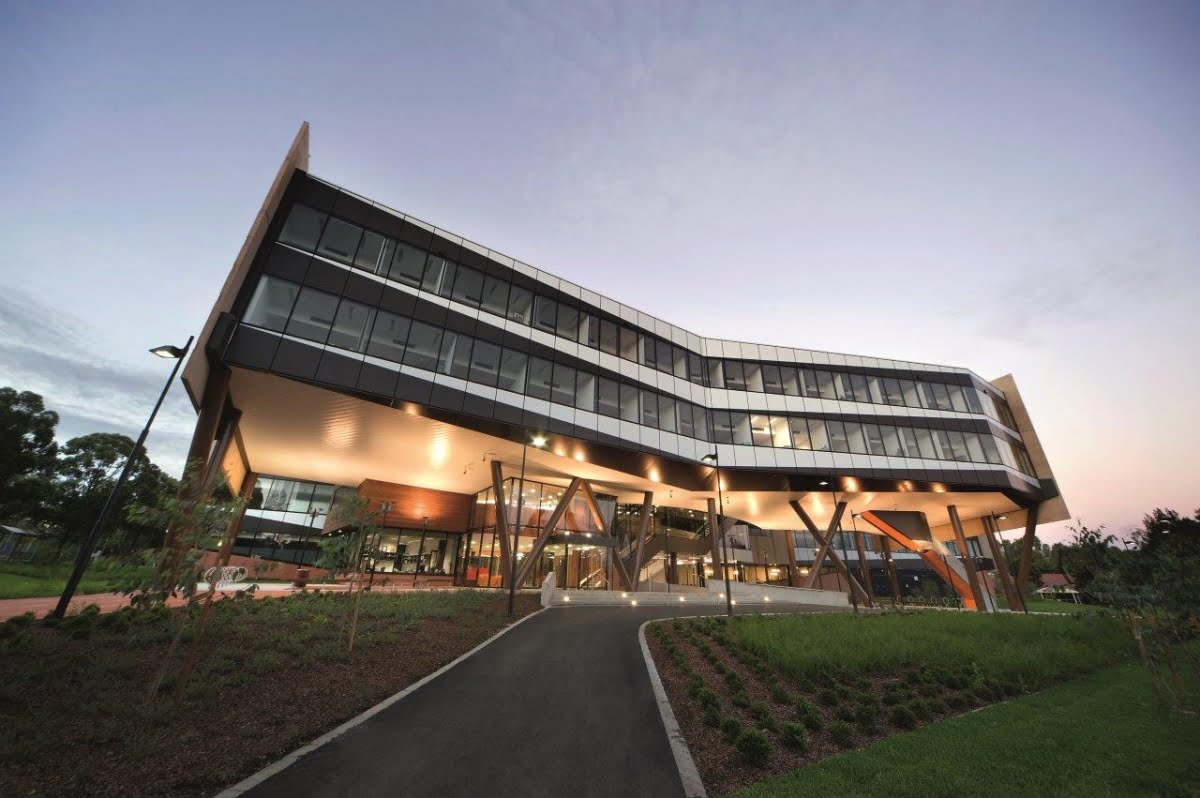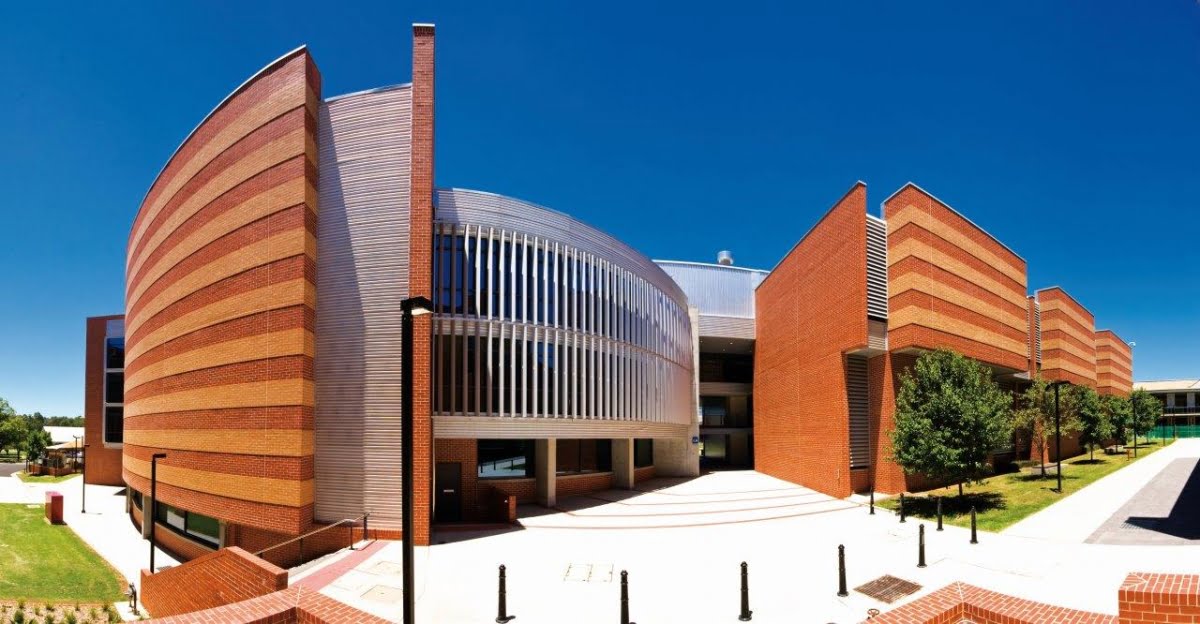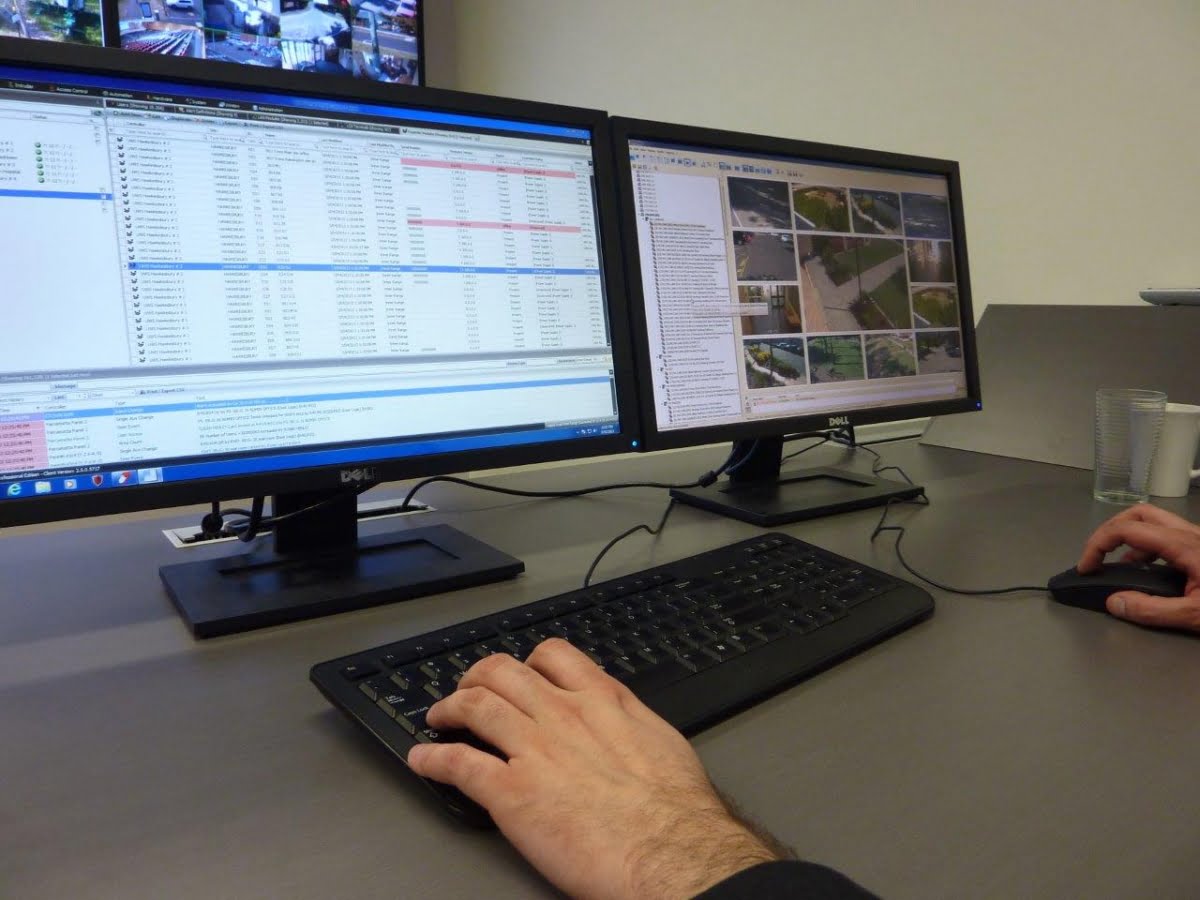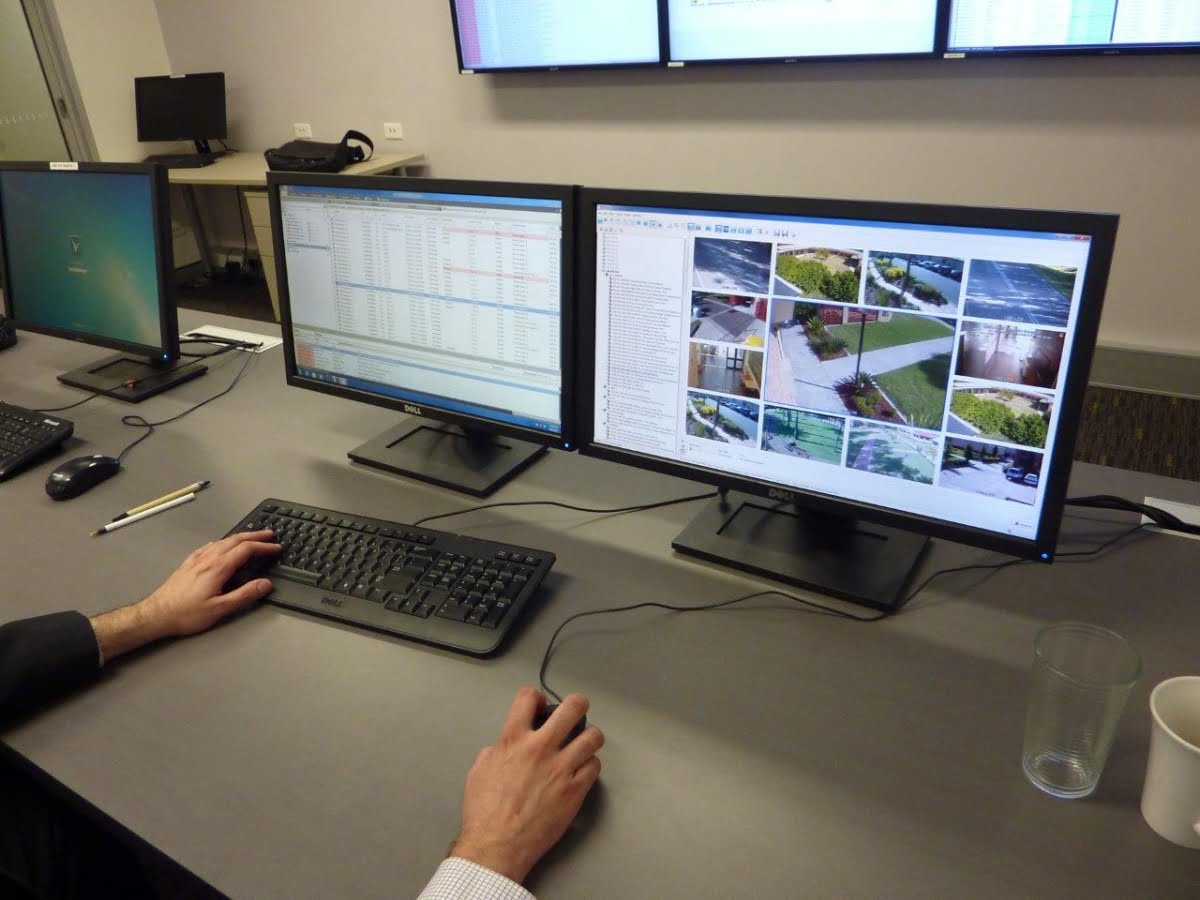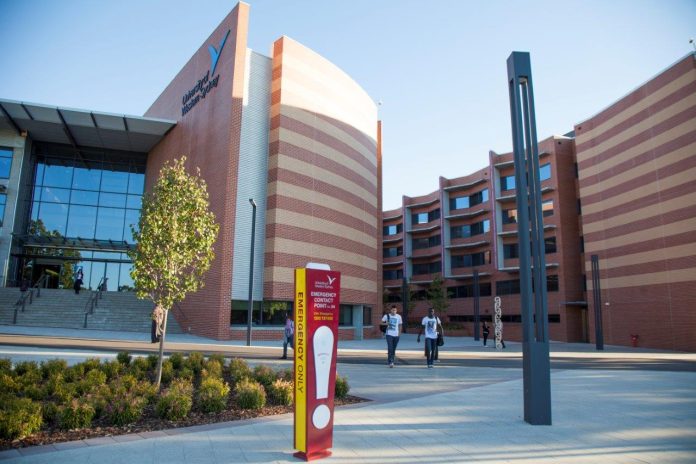A SECURITY management system is a nebulous thing. Flat explanations of potential functionalities fail to express the consolidation of ideas of company visionaries, engineers, integrators, end users and sweat-browed cable tuggers.
These inspirations are compounded and compressed over decades into a technological and operational bubble and squeak. A big system combines the mental burn, the hidden labour-lessons of thousands of people over hundreds of thousands of hours.
The enormity of synthesising the meaning of a big system then, is best expressed through its application as a solution. And that’s even more the case when the solution being migrated is this one – the University of Western Sydney’s epic Inner Range Concept access control, alarm and automation system. This UWS system was vast in scale and chronology, its controllers, devices and operational procedures layered in strata stretching back to 1999.
The University of Western Sydney is geographically one of the largest in Australia and its campuses are widespread. Little wonder then, that as the system developed after its initial installation, it was geographically modular. Each of the 5 major sites was a world of its own, monitoring its own events and managing its own huge cardholder libraries using a number of solutions that culminated in Inner Range’s capable Insight management software.
Security managers out there will comprehend the intense challenges such a system configuration portends when the modern doctrine of integrated enterprise networks is applied to silos of yore. Thinking about UWS, considering its scale and its challenges, it seems this is the perfect application to express the power of Inner Range’s new Integriti platform, a solution that pitches Australia’s premier electronic security manufacturer squarely at the enterprise level, exactly where UWS desperately needed its system to go.
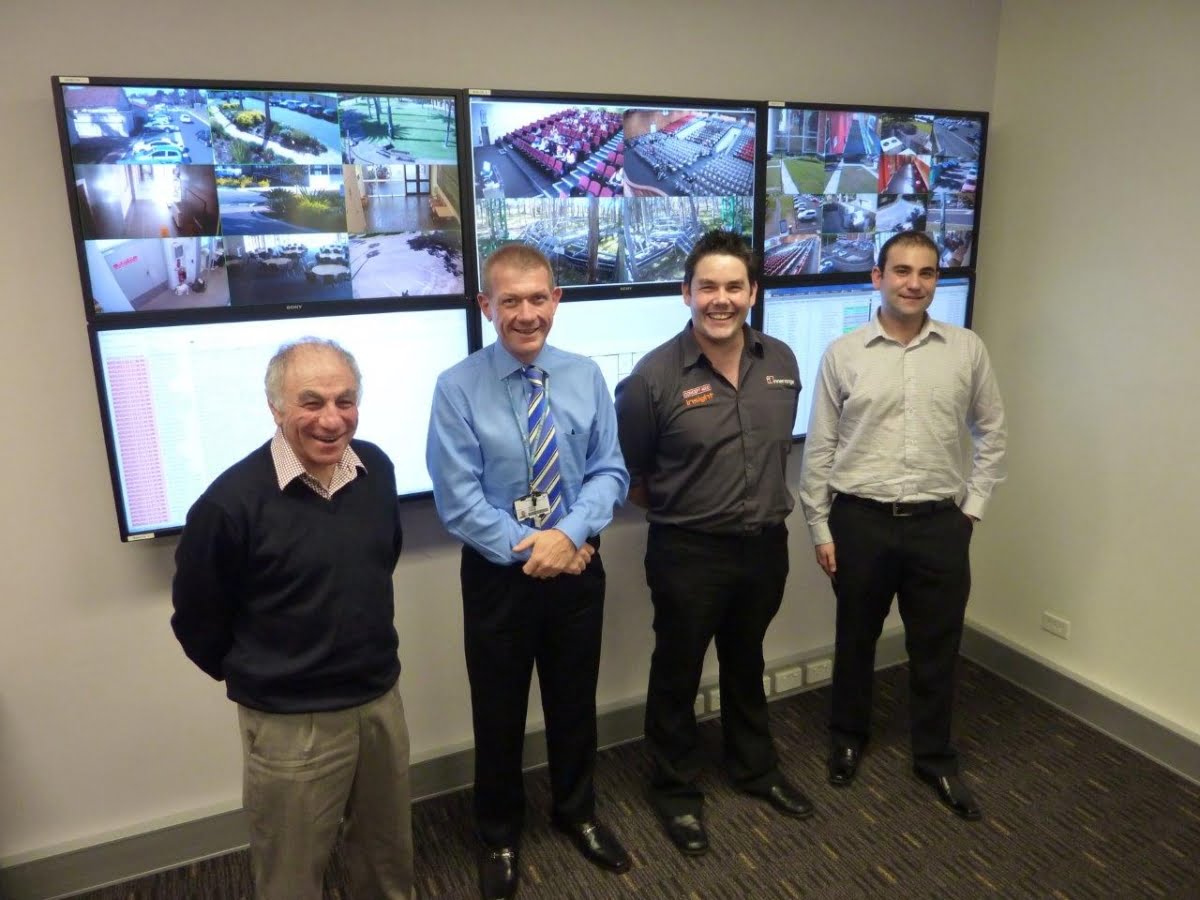
At the heart of this migration from Concept to Integriti lies the timeless paradox that pits cost constraints against performance. For UWS, its existing Concept installation comprising locks, readers, alarm inputs, door controllers, the binding threads of RS485, the clever CLOE (Concept LAN over Ethernet) network portals which link modules across existing networks, represented an investment the organisation could not afford to lose. The cost of total replacement across all sites was estimated to be around $A5 million.
So UWS needed something else. A governing solution that retained all the fully functional aspects of the robust Concept devices and comms paths in the field, yet melded them into an operational whole. And this solution needed to be composite yet redundant right down to the individual controller.
These issues had perplexed UWS security operations manager (West), Glen Cooper for 20 years. Cooper’s experience with UWS’ security system goes back to the original installation and his intense operational focus gives him great authority here.
I met with Cooper and members of the Inner Range team at the soon-to-be-commissioned UWS control room. The space is shiny new – a line of workstations, a video wall, an adjacent break-out room in a refurbished section of the security centre at the leafy Hawkesbury campus on the outskirts of Richmond.
Sitting in the control room I get a strong sense of that communal university atmosphere and the security staff are warm and enthusiastic about their system and their work. Professional security teams own their sites and they parent the people they protect in a way unrecognised by outsiders. In subtle yet definite ways the team at UWS is driven by this unspoken culture of care.
Effortlessly straddling the divide between security officers and management, Cooper is both laconic and intensely focused. While not back-end technical he’s got a vivid sense of what a security system needs to offer a major enterprise. Throughout our conversation whenever the topic strays, Cooper bodily hauls it back to the operational imperatives of his security team.
Like every major system, UWS had a primary driver for its scope of works. In this case it was to centralise control, to make management simpler and to make operations more efficient. According to Cooper, from his perspective, half the issue was that the existing system could not be centralised and that made controlling such a big organisation very difficult.
“Look at all those maps up there behind you – those graphics show every UWS site. Before this migration every one of those huge campuses was run individually – it was operating on its own,” Cooper explains.
“And the trouble was if you wanted to another campus prior this migration to Integriti you’d have to go to that campuses’ security office and get a site-specific card programmed. It was like that for every campus.
“Operationally, when people can’t get around a university it’s a big thing. All our capital works staff – they travel to all our campuses – there are 150 people in that group. In our IT department there are 150 staff, too. We have 50,000 students and staff.
“From a customer service level it was so frustrating for our teams,” Cooper grimaces. “Students and staff would come and say ‘I had my card programmed yesterday and now it doesn’t work’. I used to listen to it and it was just painful.
“Thanks to this migration to Integriti we’ve turned that around completely, there’s central control and the way the security team has re-done the permission groups is clear. You know exactly where a person fits in cardholder groups and the areas a cardholder group can access are clearly defined and can be applied automatically across the entire organisation. Compared to the way things used to be it’s just so much better.”
Also up to its neck in the process of migration was Inner Range. The company’s MD Vin Lopes has lost none of the enthusiasm that defines him and he’s extremely pleased with the now completed UWS solution. Because of the size of this application and its complexity, UWS is a touchstone for the operational integrity of new Integriti, a fact not lost on Lopes.
“To have migrated a system as large and complex as UWS to a new platform with no problems shows how good Integriti is,” he says. “This system is evidence that size is not a problem for the Integriti platform – it can grow as big as you need it to grow. With Integriti the system has gone from being panel-centric to system-centric.
“A system this big, designed in an IT philosophy, is challenging for many installation companies so we needed to have more involvement from a professional services level. This is a big and complex project.
“UWS has a range of hardware which includes just about every revision of hardware and firmware produced by Inner Range in the last 20 years,” he says.
“Bringing all these together on the integriti platform represents a cross-compatibility achievement in its own right.”
Sites and the original system
Given the size of UWS it’s important to lock in an idea of what we are dealing with here, geographically and from a system point of view. There are 5 major sites that comprise the University of Western Sydney. These campuses are located at Hawkesbury, Campbelltown, Bankstown, Penrith and Parramatta.
The sites have varying roles from an educational point of view. The huge 3500-acre Hawkesbury campus at Richmond where the new central control room is located is dedicated to research and hosts the Free Air CO2 Enrichment project (FACE).
Other campuses, such as Parramatta where the central server for the new system is located are dedicated to student learning and have huge databases of up to 16,000 cardholders. In important ways these different operational focuses molded the existing solution on each campus, as the Inner Range team found during commissioning Integriti.
“The trouble was if you wanted to another campus prior this migration to Integriti you’d have to go to that campuses’ security office and get a site-specific card programmed. It was like that for every campus”
What all these sites had in common were Inner Range Concept solutions handling access control and alarm inputs (security and automation). Each of the existing systems comprised field devices including locks, readers and various sensors, zone expanders, door controllers and Concept controllers.
There were a total of 32 Concept controllers across the 5 campuses. Multiple modules were linked across each site using Inner Range CLOEs. The CLOEs convert RS-485 to IP at one building and then convert it back to RS-485 at another building and this happens 250 times across the installation. Managing each separate system was Inner Range’s Insight software installed on a workstation in each local security office.
The essence of the UWS migration then, was the replacement of 32 Concept controllers with 32 new Integriti controllers while all other system components were retained. This sounds easy and from a physical installation point of view, it was simple enough. But plenty of work was required to massage the 5 databases to conform to and take advantage of the capabilities of the new Integriti platform.
We’ve written at length about Integriti’s functional muscle in SE&N. Suffice to say it’s an enterprise solution, a creature of the digital age. Given this fundamental and the pressing 24/7 needs of UWS, it was decided that Inner Range would co-ordinate the project and specifically, that the company’s big engineering team would have the responsibility of merging the disparate databases.
A key aspect of the migration was that the upgraded system not merely mirror the comparatively limited capabilities of the older Concept systems, but liberate the power of the new Integriti platform to support UWS in new ways. Part of this included high level interfaces linking Integriti to the UWS Geographical Information System, an industry standard platform that shows the location, nature and status of every site, building and device across the organisation.
Planning migration
At the heart of the migration has been Adam Byrne, director of campus safety and security at the University of Western Sydney. Byrne’s role included the original design, funding requests, budget preparation and the initial tendering and procurement.
“I was also the initial project superintendent, however, as the project grew in size and scope we realised that a full time project manager was required and subsequently one was allocated,” Byrne explains.
“This allowed me to be more of a client having a service delivered while retaining ownership of the project. Planning was 18 months and included system design, assessment of integration capabilities and procurement.”
Also involved pretty much from the get go was Inner Range. Vin Lopes says from an Inner Range Range perspective, the actual UWS migration began in October 2012 but the project had begun earlier still, when Inner Range was approached to suggest the best method of integrating UWS’ multiple remote Concept solutions.
Lopes says Insight Virtual Panel was considered as an option but given the impending release of Integriti, it was quickly realized it would be the better solution.
Something else that quickly became apparent was that the existing UWS system was a complex one. The university had wrung every drop of performance out of Concept, not just in terms of alarm inputs and door control, but integration to pagers, automation and research monitoring.
The first move was to get copies of the separate databases to Inner Range engineers so they could understand the nature of each and plan how to bring them together, while improving their functionality through Integriti. According to Lopes, this was managed using a combination of migration programs and software tools to shape the Concept programming structures to better reflect the underlying power of Integriti.
Central to the overall process was the acquisition and installation of a new VPN-enabled server that was installed at Parramatta. Integriti software was installed on the new server and it became the hub around which the entire migration revolved.
Some key aspects of the automation process included standardising groups and merging user identities across all sites, as well as sifting out duplicate entries and invalid records. Handling this automatically was a godsend for UWS.
There were some surprises, too. Out of the blue the team discovered Concept was responsible for monitoring a wide array of scientific experiments, including the FACE project at Hawkesbury.
“We had no idea that Concept was handling complicated environmental alarm macros until during the process of migration Adam said ‘what’s this Face Array in the automation control?’,” laughs Lopes.
“When we asked about it Glen told us that among other things our system was monitoring one of the world’s only scientific experiments of this type and that this level of monitoring was vital functionality for UWS. We integrated this into Integriti during the process of migration and it’s working well.
“The programming to handle this monitoring process was migrated from Concept Calculated Auxiliaries to Integriti Macros and tested into submission,” says Lopes. “Re-implementing this logic using Integriti Macros was a baptism of fire for the new system but on migration day everything ran smoothly.”
Cooper explains this functionality was vital for UWS
“A big thing for us is the reliability of the system for our research protection – it’s a really high priority. In that operational monitoring area we have some microscopes in some experiments that if they lose power we have to get international support – there are only a handful of these things in the world.
“What we did was map out where all the research protection was across the organisation and behind that are instructions that show what has to be done in the event of failure. This alarm handling capability was built for us by Inner Range. It’s operational, but the functionality began with pre-migration planning.”
How many hours did the engineers put into planning the migration?
“There were weeks of work in the programming,” Lopes says. “Transitioning 5 disparate systems to a single cohesive system required a deep operational understanding specific to the site, which cannot be completely automated.”
Adam Lopes agrees.
“Yes, there is a paradigm shift. But our migration tools which we developed for this project have become quite sophisticated and by the last couple of campuses we were doing it much quicker. The first one might have taken us a week, the last one took us a day,” he explains.
The installation process
Once the process of merging the database was complete it was time to take the next step. New Integriti controllers were sent out to the 5 local installation companies responsible for handling the UWS solution. Techs took the 32 controllers to site and installed them adjacent to the existing Concept panels. The Integriti controllers were connected to the network and enrolled on the central server at Parramatta.
What this meant was that there were 2 entirely independent systems running side by side, with the new Integriti system idle. The plan was that on migration day, each RS-485 LAN segment managed by Concept would be swapped over to Integriti to provide a seamless cut-over and instant redundancy if required.
With the panels installed, the merged database was then downloaded onto the central server remotely and the new system was tested thoroughly. Next, the databases was downloaded into the Integriti controllers, the first undertaken onsite, the others remotely. Then came remote firmware downloads from the management software to the controllers of the now operational Integriti system.
According to senior Inner Range support technician, Daniel Joubert, the first time anyone from Inner Range set foot on the UWS site at Richmond was when he came to Hawkesbury campus to physically migrate the first Integriti panel. All the rest of the work leading up to the migration had been handled remotely.
Joubert arrived early – the idea being to make the swap at the quietest possible time of day from a system activity point of view.
“It was very intimidating seeing the size of the site and I began to have doubts about how easy the migration would be,” he explains. “There are moments when you are swapping systems over and you know that if something goes wrong it will be a major problem so there are obviously nerves.
“But 3 hours later the hardware was running flawlessly on Integriti, users were accessing doors and security officers were controlling the site using Integriti software. It was simply a matter of swapping over the LAN – the database was there and ready to go.
“All the modules came up and everything was functional. I think it really shows how robust a product we have developed in that a diverse range of hardware modules with different firmware versions all came online instantly with just seconds of downtime for each controller.”
One of the huge advantages of the new system is the ability for authorised techs to maintain the system remotely and this capability was leveraged during the installation. Joubert says much of the time he was working on the system at home when activity at the campuses was lowest.
While there were little issues – some programming structures that didn’t fit and some tweaking of time-zone functionality required, Joubert says that the hardest part of the migration was trying to decipher what a given functionality was doing in Concept.
“A function zone might trigger an auxiliary and then go through another qualifier to unlock a door in Concept, when using Integriti you might just use an input to unlock a door,” he explains.
“That was the thing that took most time – figuring out how the existing Concept system was pieced together and then mirroring that functionality but with increased performance and greater simplicity using Integriti.”
Meanwhile Adam Lopes says that a key element of the successful migration was planning.
“We set up a duplicate of UWS’ control modules back at the Inner Range office in Melbourne and we had the 32 Integriti controllers installed there. We made sure they worked in advance – there was no room allowed for error.”
Lopes points out something else as well. A huge solution like this with tens of thousands of cardholders has myriad changes taking place hourly and that change had to be reflected in the upgrade in real time or crucial data would be lost.
“Constant change – that was an issue for us during the migration,” Lopes explains. “If the migration of data was going to take 3 days it was simply not good enough because that meant there were 3 days of changes to the database that you were going to lose. This meant the swap-over had to be a real time process where these migrations were applied to the live system incrementally.
“The UWS operators were a real help with that and they got the hang of it really quickly which was great because without it being a collaborative process it would have been a mess with lost changes.”
At this point Cooper who has been nodding agreement chimes in.
“I was surprised that it worked when we switched over – it’s been seamless,” he says. “I was so concerned with the changeover on this site that I put on 3 extra security officers because I really believed we would need them to run around opening doors. They were gone in a couple of hours – we didn’t need them.
“We had the odd door that didn’t open and that turned out to be just programming issues that needed cleaning up anyway – the migration had simply highlighted an existing problem. I can honestly say the only real issues were our own issues – because we had not kept control of our user types.”
Importantly, Cooper says that staff have taken to the system very well.
“Most our security officers have been with us for many years, some since the time of the brick mobile phone method of alarm reporting 20 years ago,” Cooper chuckles. “They’ve been through multiple upgrades of the system and every time we’d upgrade communications they’d be ‘oh no, here we go again’.
“Yet for them it has been very easy to make the switch to Integriti. We have not had to spend much time training the guys. We trained the team leaders and they have passed on the information. It has not been a difficult thing for them to get hold of and I was worried about that in honesty – I’ve really talked the benefit of getting an integrated system up.”
Something else worth pointing out here is that the Integriti platform with its clustering technology, is thoroughly redundant, as well as allowing the addition of redundant servers wherever required across the entire network.
“We are planning a redundant server here at Richmond but if the server/s are lost the system will still operate using the Integriti controllers which have all the programming and the entire database inside them,” Cooper explains.
The substrate of the UWS solution is 10Gb high capacity fibre between all 5 campuses and the Integriti controllers communicate with the central server across this big highway system. At the same time the central control room uses the same network to monitor all system events in real time.
“It works well and we’ve been extremely happy with the performance we’ve seen, especially seeing that the server that runs this control room is located in a rack in Parramatta,” says Adam Lopes.
Meanwhile, from the point of view of the security team at UWS, Adam Byrne says that with around 50,000 enrolled users across 6 campuses, all on disparate databases, getting all card users enrolled on a single platform has been the greatest challenge.
“But the engineers from Inner Range have been fantastic and have supported us all the way,” Byrne says.
Driving the system
The Integriti management system is both feature-rich and intuitive and steering the system you get a sense of the profound power of the underlying Integriti solution. It’s very easy to talk about integrating multiple controllers across multiple sites, to boast of the ability to manage such systems in real time at a remote location, but it’s much harder to actually achieve this outcome.
Cooper gestures to the workstations in front of us.
“Right here is the entire global system – from here operators can view global events, access any connected part of the site and access all the system’s functionality,” he explains.
“But at the same time, authorised security officers can also go into each of the remote campus security offices were they also have a workstation that’s connected to the central server and they can monitor and check on their local events while we oversee the whole system.”
Real time from a remote location? How is that possible across busy data networks? I ask.
“See that detector – if you wave your hand in front of it (he waves) and we watch the monitor for the event to come up in the event log, that’s all happening via the Parramatta campus,” Vin Lopes says. “It’s instantaneous for 11,000 detection points and 2500 doors all updated in real time.”
We go through the process and I estimate response is a couple of hundredths of a second – it’s a tiny delay that has no impact whatever on operational efficiencies. Throughout my time in the control room events keep pouring onto the event log in huge numbers.
“Now, bear in mind that this instant propagation of events or instructions works in the opposite direction, too,” Lopes tells me. “This means that from this location you could lock down the entire university or unlock the university by simply selecting doors in groups and then actioning a group.”
Global lockdowns? Is that necessary functionality, I’m about to ask when Cooper pipes up.
“Yes absolutely, that is something that we need,” he says. “There’s a functionality that we are working on that will allow us to lock down the entire campus from this office if we ever need to at the click of a mouse. That for us really is important. We have had incidents where this capability would have been of real value to us.
“Using this system when the lock is taken off the system goes back to where it was before the lock-down. All the states of all the inputs are retained – you don’t have to work out what needs to go back to what state manually,” he says.
There’s no doubt whatever that the stand-out capability of the management solution at UWS and a real feather in the cap of Integriti is its high level integration with the UWS’ Geographical Information System (GIS). The awesome piece of software incorporates deep mapping of all UWS sites down to identification of devices whose health can be monitored in real time.
“GIS is a system the university runs live and we integrate with that and the Geutebruck system at a high level,” Vin Lopes explains. “When you get an alarm you click on the alarm event in this software and that brings up the cameras associated with that area and then a window into GIS will open and show the detector that has alarmed, the site it is located, the room it is located in.
“We have our own schematics but to populate and maintain schematics for the entire university – that’s silly – better to interact with what UWS already has,” Lopes says. “What we do is talk to the GIS and liven up detection points within it.”
Adam Lopes agrees.
“Integrating with GIS means that UWS’ security management solution is an all-graphical rather than a text-driven interface, but most importantly it’s already populated with all the information needed,” he says. “The GIS incorporates more than 2000 floor plans and doing this manually just for the security system would be unrealistic.”
We look at a map of a building running live.
“The way it works in the background is that the GIS provides us with an API which allows us to interface with it and ‘liven up’ points on their graphical map – active icons for cameras and sensors, etc. The plan going forward is that we will have a graphical global campus that will be on a video wall somewhere and during an incident the map will be able to show you to a really high level where the incident is occurring.
“Simultaneously at a micro level the operator can see the GIS system, the various automation options they have for that alarm, access their ability to respond, enter operator notes, show standing orders and send SMS messages,” Lopes explains.
There would be things changing all the time across wouldn’t there?
“Yes and the GIS allows us to keep up with that,” Cooper tells me. “All the changes across the whole UWS organisation are reflected on the GIS. That’s the beauty of integrating to it. As builds and new systems and devices get delivered they get updated by our technical staff across multiple departments onto the GIS and that flows through to our management system – so it’s very good.”
Sounds like now you have fingertip sensitivity with the new system?
“We definitely have and from my position I can look at things very easily, I can get my team leaders to look into things a lot quicker – they have the tools to look into problems. It’s great from an operational point of view,” Cooper enthuses.
“We can see the alarms, we can view associated camera footage across all the campuses. We have 600 cameras across the system now and there will be 1000 in the next couple of months. All components of the system will be integrated and associated so when you click on video of an alarm event you’ll go straight to the Geutebruck system and be shown the historical video of that event.”
Adam Lopes raises another vital issue.
“One of the advantages of integrating with the GIS system is that we don’t have to team devices up manually,” he explains. Instead we can just associate detection devices with the cameras nearest to them. Because we don’t have to handle that process manually, we avoid the possibility of human error with data entry.”
Cooper agrees wholeheartedly.
“It’s such a big thing for us being able to map everything,” he says. “We’ve got it set up in a way so that if we run a mouse over a device, the system will throw up an ID number. Same as doors. It’s live, it’s real, it’s there. We’ve never had that before. In fact, we’ve never really had a sense of the parameters of our global security system.
“If you had come to me in the past and said how many components have you got out there? I would have just laughed. How many doors, how could we know? There was no way to establish what existed across multiple huge systems. During the migration we found components we did not even know we had because they got bought over to the new system.
“We were also able to identify problems we did not even know existed – we had no way of finding that sort of detail in such a big system. Now we’ve mapped everything out, everything has a name, everything has a number. We have been able to resolve all those issues because things are flagged if the system sees there’s a problem with a component. It’s brilliant.”
Another feature the boys point out is that access to lockers is assigned to students and its planned that these lockers incorporate monitoring. The way this will work is that if a student accesses a locker and then does not retrieve their gear from it within 24 hours, the system will alert security so officers can check the safety of that student.
And according to Adam Byrne the most important capabilities of this new Integriti platform from his security team’s operational perspective all relate to its ability to operate flexibly in real time.
“Flexibility is the key thing for us,” he says. “I now have remote access to and control of the entire university network via my laptop. We are an enterprise featuring 550 buildings and 11,000 rooms.
“The versatility of the Integriti platform in managing the day to day access across 6 sites plus managing the universities continuity in times of a crisis, while ensuring the protection of research and the safety of staff students and visitors, has made this platform a wise investment.”
From a management perspective, Byrne says Integriti has simplified a process that has been at times labour intensive and disparate.
“We no longer have these issues and the system has greatly streamlined many of our access control processes.”
Meanwhile Vin Lopes points out that this global capability to handle the system has been vital not just for security but for system management, too.
“We have been able to use the audit trail to resolve an issue that was an altered macro,” he says. “That’s important because in the past it might have taken months for the engineers to track down the problem. In addition, there are 5 companies doing installations and now you know exactly who is doing what and where. The system is great like that. The audit trail is excellent.
“And it’s powerful on the maintenance side, too. There are 2221 equipment modules around this organisation – to change firmware you would be walking around for years to upgrade it. You couldn’t find all the system’s modules if you went searching for them. But they are all visible to the security team in the GIS.
“There are MAC addresses, IP addresses for CLOEs – we are getting real knowledge about this system. And the GIS detail won’t just say ‘security device’ it will specify the device and will be consistent and the 2 logics can be mapped together.”
Conclusion
Spending time at UWS with Cooper and the Inner Range team is highly instructive. Both parties have a strong sense that they’ve achieved something special with this migration and integration and when you consider the power and control that has been liberated from an existing system it’s impossible not to agree with them. Integriti really is that good.
“This is a brand new technology just being sold over the counter and our reference site is a 2500-door university that is ticking away,” says Vin Lopes.
“It saves a fortune – imagine if they had needed to replace the entire system. And the Integriti platform is squarely in the 21st century. We’re very proud of it.”
And from the point of view of UWS, Cooper says the system is a huge step forward for the security team.
“I have been here 20 years and in the beginning we had a few panels. When an alarm event would come through to one of the old brick-sized mobile phones it would beep an alarm – you’d get in the car and drive around till you found the flashing light,” he chuckles. “But look at how far we’ve advanced. We now know everything about an alarm the instant it happens – where, when, why, often with associated video.
“We have a passion for the sort of safety and security we want to provide our staff and students and it’s this sort of system that makes the difference. It makes us look professional and we are professional with it,” Cooper says.
“UWS is big on student experience and we have really improved that. We give students automatic access to everywhere they need to be able to go across all campuses when they collect their student cards – they don’t have to go anywhere and muck around. It’s brilliant compared to what it used to be. It’s something we dreamed about for years. This system has really made a difference for us. It’s going to take us as a university where we need to be in terms of safety and security.”
Meanwhile, Byrne says the UWS Security Department’s expectations have been met and exceeded by the Integriti platform.
“We were surprised by versatility of the program and by the speed in which we were able to enrol all our card users,” Byrne says. “Security officers were also quickly able to get up to speed driving Integriti. The training provided by Inner Range was comprehensive and the system itself is quite intuitive. It is an easy system to learn.
Byrne says Integriti insures UWS against the future.
“The University continues to grow in size and scope,” he says. “The versatility of Integriti will allow us to grow in terms of off-site locations. Stand alone, including research facilities, as well as offsite residences, can all be centrally managed and monitored through the universities security control room.
“This integration has provided an opportunity for the UWS to be able to manage multiple campuses and access points, secure research and provide crucial business continuity assurance to a university with more than 500 buildings and more than 11,000 rooms.
“Overall, I think Integriti is an outstanding platform and equal to, if not better than, any similar program available on the Australian market place today. The program is by far the most advanced access control program I have ever worked with and by far the easiest and most intuitive,” says Byrne.
“The demands on access control across our institution are great and the Inner Range solution is a perfect fit for us.”
By John Adams
“Flexibility is the key thing for us. I now have remote access to and control of the entire university network via my laptop. We are an enterprise featuring 550 buildings and 11,000 rooms”


